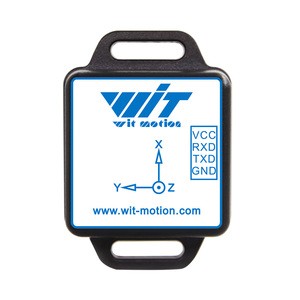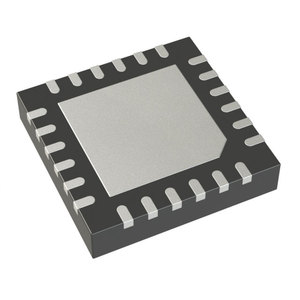
All categories
Featured selections
Trade Assurance
Buyer Central
Help Center
Get the app
Become a supplier

(1241 products available)


















































Digital gyroscope sensors are critical in various applications since they detect orientation through angular velocity measurement. They achieve this by utilizing distinct methods and constructions, resulting in many options within each category.
MEMS stands for Microelectromechanical Systems. Famous for their small size and low power use, MEMS gyroscopes employ minute vibrating elements to measure angular rate. They are used commonly in consumer electronics, such as smartphones and wearables, due to their affordability and bulk manufacturability.
Optical gyroscopes exploit the Sagnac effect by examining the difference in light waves traveling in opposite directions around a loop. They provide superior accuracy and sensitivity and are commonly used in aerospace and navigation systems, where precise orientation is crucial. However, these are larger and more expensive than MEMS options.
Fiber optic gyroscopes implement coils of optical fiber to detect rotation by measuring the phase difference of light waves, similar to ring laser gyroscopes. They are suitable for applications requiring high precision and dependability, like in military and aerospace sectors.
Applications that demand accurate inertial navigation employ RLGs. A ring laser gyroscope's Sagnac effect utilizes a laser beam traveling in both directions around a closed loop to determine rotation. Although they feature intricate designs and high manufacturing costs, they provide unmatched precision and stability compared to other gyros.
Vibrating beam gyroscopes utilize beams that vibrate and undergo flex when the unit rotates. The frequency variance of the beam's vibration indicates the direction of rotation. These gyros are useful where medium precision and cost are the main factors.
Digital gyroscope sensor modules are integrated units that merge a gyroscope with supplementary sensors like accelerometers and magnetometers. This module provides enhanced functionality by offering a full 9-degree-of-freedom (DoF) output for orientation estimation. It is commonly found in mobile robotics, drones, and motion capture systems.
The usefulness of sensor modules that measure gyroscopes comes from their important traits, which allow them to be suited for distinct applications. The following features raise a gyroscope's worth and effectiveness:
These sensors offer high angular velocity measurement accuracy, critical for applications in robotics and aerospace and image stabilization. Advanced algorithms and calibration techniques help reduce inertial measurement unit errors like drift and noise.
This quality relates to a sensor's ability to detect minute changes in motion or rotation. Highly sensitive gyroscopes can catch small fluctuations in angular velocity, making them suited for delicate operations like surgical instruments and stability control in vehicles.
Energy efficiency is critical for battery-operated gadgets such as wearables and mobile phones. Many gyroscopes, such as MEMS sensors, are built to use minimal power, extending device battery life while offering constant performance.
The smallness of gyroscope sensors enables their use in light and compact devices. In drone technology, smartphones, and augmented reality headsets, the weight and size of a sensor contribute significantly to the overall system performance. These sensors allow enhanced functionality without replacing the space or weight of other components.
These sensors provide live measurement and orientation data crucial for applications that require immediate feedback, such as virtual reality and robotics. Like digital outputs, these sensors simplify integration with contemporary microcontrollers and other embedded devices, offering faster data processing.
The gyroscope sensors are made to be reliable and durable in extreme environments. An example is the gyroscope that comes with military-grade fiber optic gyroscopes. Additionally, MEMS gyroscopes display great resistance to physical shocks and vibrations, making them suited for diverse applications in automotive and industrial settings.
Gyroscope sensors are found in many industries since they are critical for orientation and motion detection in many uses. Here are some of their notable commercial applications:
These sensors help stabilize imaging systems by measuring the device's motion and orientation, improving the camera's capacity to produce clear pictures and smooth videos. Gyroscope sensors enable precise motion-based control in applications like augmented reality (AR) and gaming, wherein the device's orientation is utilized to alter the virtual image presented on screen. Also, intelligent fitness trackers and smartwatches use these sensors to measure body parameters like distance traveled and calories burned through accurate motion detection.
Electronic stability control (ESC) systems exploit these sensors to identify vehicle orientation and motion. This enables the automatic adjustment of brakes and engine control to maintain stability and prevent skidding or flipping, especially in adverse weather scenes. These sensors are also exploited to enhance the operation of advanced driver assistance systems (ADAS), providing information for fancy features such as lane-keeping assistance and autonomous vehicle navigation by measuring the vehicle's position and orientation.
In these sectors, gyroscopes are integrated into robots and automated systems for an accurate motion and orientation detection. This makes it possible to provide the needed precision and control in tasks like assembly, material handling, and exploration. Also, gyroscopes are included in aerial drones meant for industrial use, like inspection, surveying, and mapping. They guarantee stable flights and provide accurate positional data in real-time, enabling the completion of these tasks safely and dependably from a distance.
Inertial navigation systems utilize these sensors in aircraft and spacecraft to navigate and maintain their position, even when outside references are not accessible. Outside of navigation, gyroscopes also serve critical applications in attitude and control system stabilization, where orientation and motion control of aerospace vehicles are obtained. These sensors are also utilized in guidance systems for missiles and other defense-related munitions, improving accuracy and reliability during a phase of flight.
Game consoles employ gyroscopes in motion-based gaming controllers, allowing players to interact with games by pivoting or tilting their controllers. In photography, stabilizing equipment, like handheld gimbals, uses gyroscopes to compensate for camera operators' motions to achieve smoother video capture.
One must think about several important factors when selecting the gyroscope sensor to suit one’s needs. Below are some of those:
Determine the angular motion measurement accuracy needed for the application. Basic apps do not need such precise measurements, whereas precision apps like space navigation demand highly accurate ones.
The main rotation range the application will experience should be measured. For fine-angle detection, a more sensitive gyroscope will be necessary.
Consider the conditions in which the gyroscope will be used, such as temperature, humidity, and exposure to dust or liquids. Choose a gyroscope with adequate environmental protection ratings and an extended temperature range for outdoor or harsh settings.
Ensure that the sensor is compatible with existing systems, like microcontrollers or data-processing units. Some gyroscopes have simple plug-and-play capabilities because of their digital outputs.
Various gyroscopes are equipped for various uses. Optical and fiber optic gyros are suitable for great precision, while MEMS gyros fit consumer electronics and mobile devices due to their compactness. The best kind must be chosen according to the required application.
The cost of a gyroscope must be balanced with its performance and application needs. Although high-precision, costly sensors are better for critical operations, one may get a more affordable choice if a less critical application does not require high precision.
This factor is especially critical in battery-operated apps. Low-power gyroscopes are more favorable for wearables, mobile devices, and other portable devices since they help conserve battery without compromising performance.
The project’s overall design and space constraints should be considered when selecting a gyroscope's size and form factor. Specifically, those devices in drones, smartphones, and compact wearables should consider small-sized sensors.
Both types of gyroscopes have different uses. Analog gyroscopes are suitable for high-precision and stable applications since they offer exact measurements with minimal drift. Meanwhile, digital gyroscopes usage in consumer products is more affordable due to their compactness and ease of mass production.
Digital gyros measure angular velocity by utilizing Coriolis force. They are commonly employed in mobile devices, robotics, and stabilization systems due to their compactness and low power consumption.